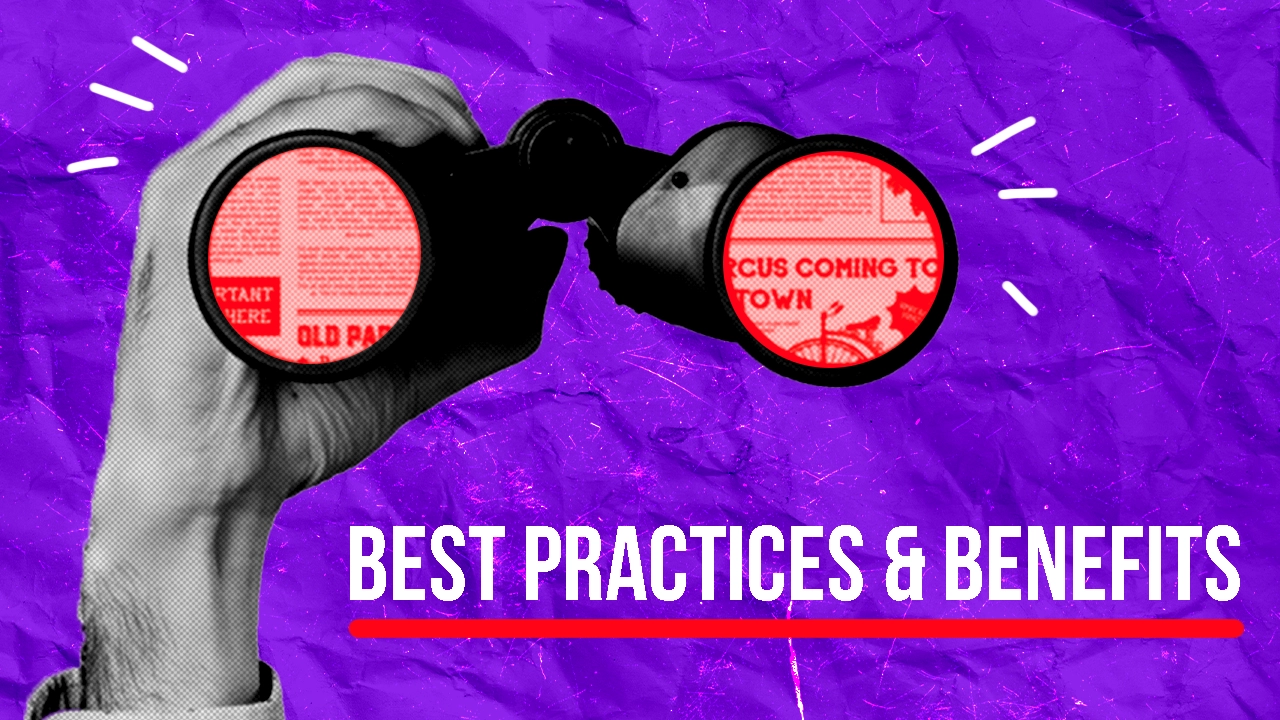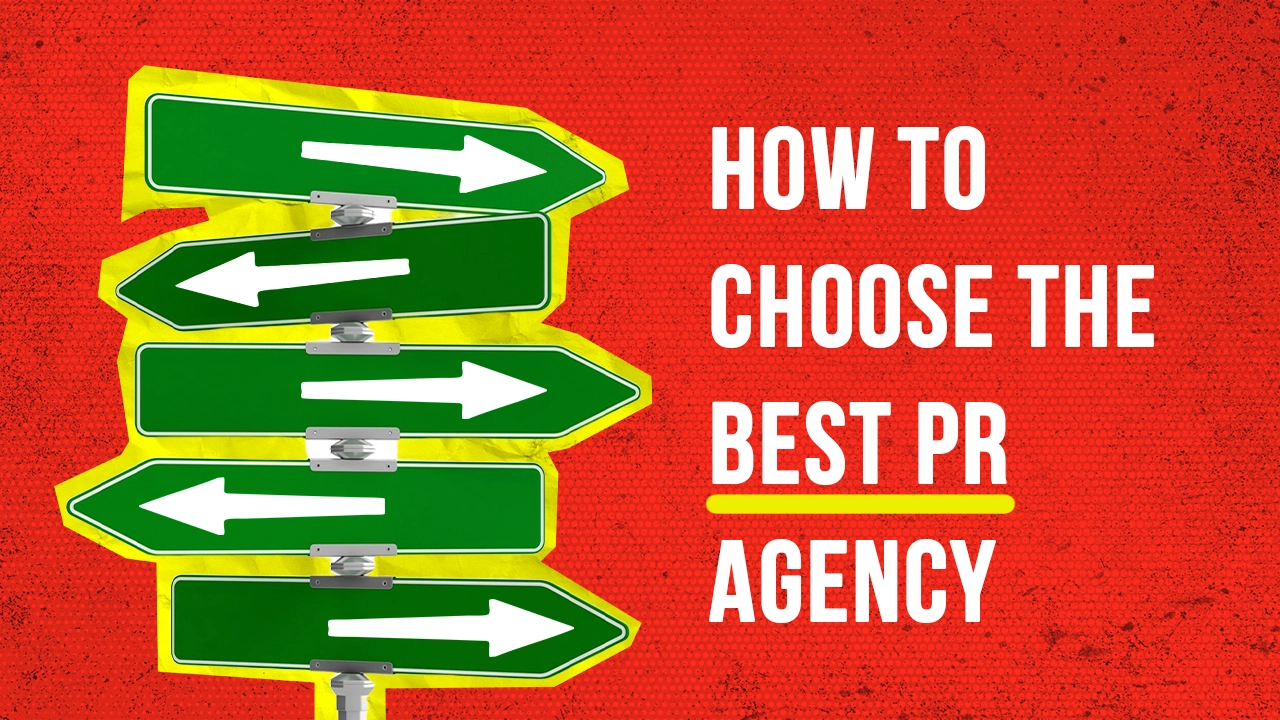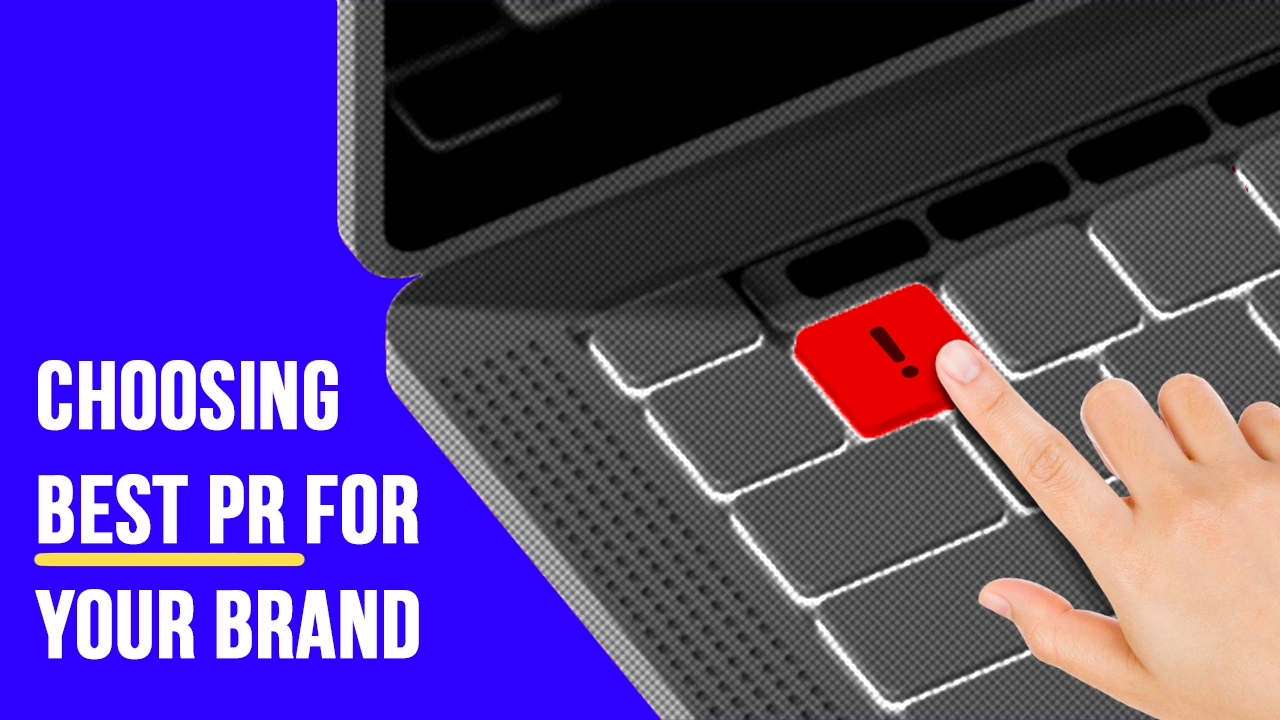In today’s fast-paced digital world, press releases remain a cornerstone of public relations, helping brands communicate their messages, establish authority, and build meaningful relationships with their audiences. However, as technology evolves and societal values shift, so too do the strategies and techniques used in press release writing and distribution.
The year 2025 promises a host of transformative trends that will redefine the press release landscape. From artificial intelligence (AI) and data-driven insights to the rise of sustainability messaging, PR professionals must stay ahead of the curve to remain relevant. In this comprehensive guide, we’ll explore the latest press release trends shaping the industry and offer actionable insights to help you thrive in the ever-changing PR ecosystem.
Key Takeaways:
- AI Integration: The growing use of AI in press release creation, personalization, and distribution.
- Multimedia Enhancements: Visual content is becoming a must-have to capture audience attention.
- Data-Driven Strategies: Analytics tools are critical for measuring success and optimizing performance.
- Sustainability Messaging: A shift from ESG-focused content to broader sustainability themes.
- Balancing Technology with Personalization: AI is helpful, but the human touch remains essential.
- Overcoming Distribution Challenges: Strategies to reach journalists more effectively and expand audience reach.
Table of Contents
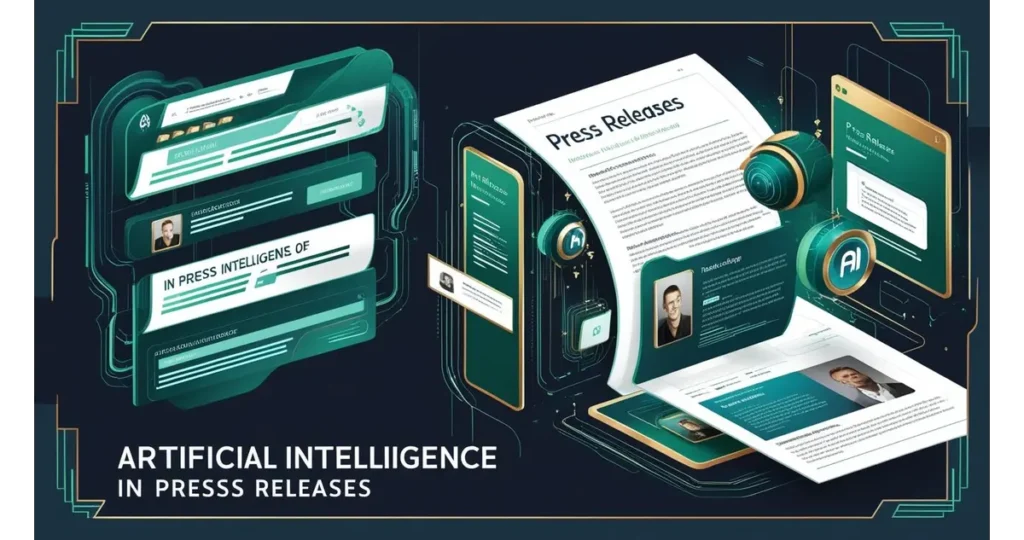
Integration of Artificial Intelligence in Press Releases
Artificial intelligence (AI) is not just a buzzword anymore—it’s reshaping the PR landscape, especially in the realm of press releases. By automating repetitive tasks and offering advanced analytical capabilities, AI is enabling PR professionals to focus on strategy and creativity while achieving greater efficiency and impact.
The Rise of AI in Press Release Creation
AI tools have been rapidly adopted in the press release process, revolutionizing everything from drafting to distribution. Here are some specific ways AI is being used in press releases:
- Content Drafting: AI-powered platforms like Jasper and Writesonic can generate press release drafts in seconds. These tools analyze input data (such as keywords, event details, or product information) and produce concise, well-structured content.
- Headline Optimization: Crafting a compelling headline is critical for press release success. AI tools like CoSchedule’s Headline Analyzer help PR professionals create headlines that are not only catchy but also optimized for search engines.
- Personalization at Scale: AI can tailor press releases for different audiences or media outlets by analyzing demographic data, journalist preferences, and historical performance metrics. For instance, a product launch press release can be adjusted to appeal differently to tech journalists versus lifestyle bloggers.
AI in Distribution and Engagement
- Targeted Distribution: AI platforms can analyze media databases and identify the most relevant journalists, bloggers, and influencers for your press release. This precision targeting increases the likelihood of coverage.
- Performance Monitoring: AI-powered analytics tools like Meltwater and Brandwatch track press release performance in real-time. Metrics such as reach, impressions, and sentiment analysis help PR teams understand how their content is being received and adjust strategies accordingly.
AI’s capabilities go beyond content creation. Its role in the distribution and engagement process is equally transformative:
Future Prospects of AI in Press Releases
Looking ahead, AI’s potential in press releases is boundless:
• Interactive Press Releases: AI will enable the creation of dynamic, interactive press releases that adapt to readers’ preferences. For example, an AI-enhanced release might provide video summaries for time-strapped journalists or deeper data insights for analysts.
• Predictive Analytics: AI tools will increasingly predict press release performance before distribution, providing actionable insights to refine messaging or timing for maximum impact.
💡 Pro Tip: Despite AI’s growing capabilities, it’s essential to keep a human touch in your press releases. While AI can craft content efficiently, only a human can inject the nuance, emotion, and creativity that resonate with audiences.
Best Practices for AI Integration
The integration of AI into your press release strategy is no longer optional—it’s a necessity to stay competitive. However, successful AI adoption requires thoughtful implementation. Here’s how to make the most of AI in your PR efforts:
1. Invest in the Right Tools
AI tools vary widely in their functionality and sophistication. Choose platforms that align with your needs and budget. For instance:
- Content Creation: Use tools like Jasper for drafting and Grammarly for editing.
- Analytics: Leverage Meltwater or Cision for tracking press release performance.
- Targeting and Distribution: Platforms like Prowly or BuzzStream can help identify and reach the right journalists.
2. Train Your Team
AI tools are only as effective as the people using them. Provide training to your PR team to ensure they understand the capabilities and limitations of these technologies. This training should include:
- Understanding how to input accurate and meaningful data.
- Reviewing AI-generated content for errors or biases.
- Interpreting analytics reports to make informed decisions.
3. Balance Automation with Oversight
AI can automate many aspects of press release creation, but human oversight is crucial to maintaining authenticity and quality. Use AI as a supportive tool rather than a replacement for human expertise. For example:
- Review AI-generated drafts to ensure they align with your brand voice.
- Adjust AI-suggested distribution lists based on personal knowledge of media contacts.
4. Use AI for Strategic Insights
AI’s analytical capabilities are invaluable for refining your press release strategies. Use data-driven insights to:
- Identify the best time to distribute press releases for maximum visibility.
- Tailor messaging based on audience preferences.
- Continuously improve your approach by analyzing what works and what doesn’t.
💡 Pro Tip: Start small by integrating AI into one aspect of your press release process, such as analytics or targeting, and gradually expand its role as your team becomes more comfortable with the technology.
Subscribe to our newsletter for exclusive insights into AI-powered press release strategies and more industry trends. Stay ahead of the curve!
By deepening your understanding of AI’s potential and adopting these best practices, you’ll not only improve the efficiency of your press release strategy but also create content that resonates with your audience and achieves measurable results.
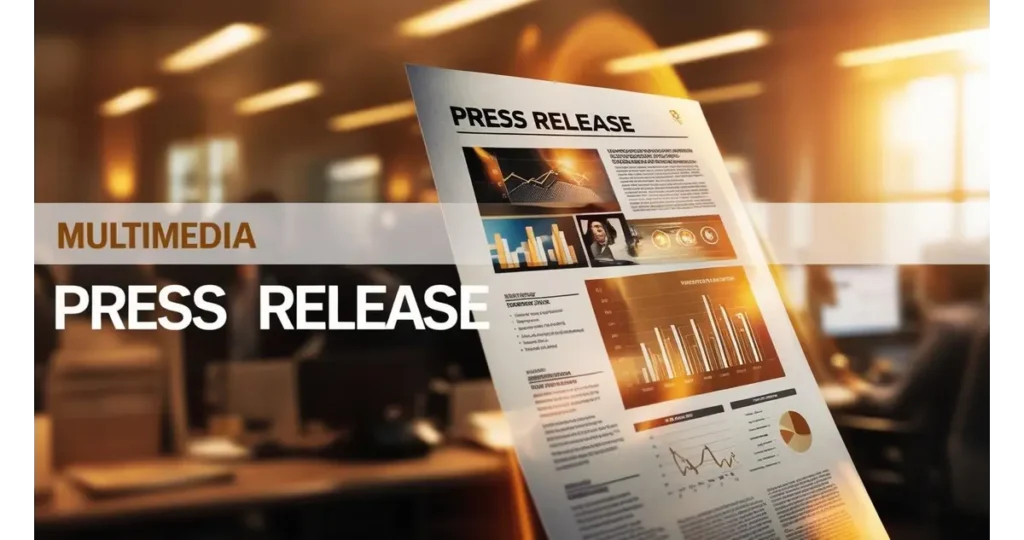
Increased Use of Multimedia Elements in Press Releases
Press releases are no longer confined to blocks of text. In 2025, incorporating multimedia elements—such as images, videos, infographics, and audio—is essential for creating press releases that stand out in crowded inboxes and resonate with diverse audiences. The digital age has transformed how information is consumed, and visual content is now a key driver of engagement and retention.
Why Multimedia Matters
The inclusion of multimedia in press releases is not just a trend—it’s a necessity for grabbing attention and increasing impact. Here’s why:
- Enhanced Engagement: Multimedia content commands attention. A video or infographic within a press release can boost click-through rates by up to 70%, as it provides an immediate visual representation of the story.
- Improved Retention: Studies show that people remember 65% of the information when it’s paired with relevant visuals, compared to just 10% when presented as text alone.
- Better Social Media Reach: Visual press releases are more likely to be shared on social media platforms, extending their reach and enhancing brand visibility.
Popular Multimedia Formats
- Images: High-quality images related to the press release content (e.g., product launches, events, or key personnel) make the story more relatable and appealing.
- Videos: Short, engaging videos provide a dynamic way to convey messages. These can include product demonstrations, event highlights, or executive interviews.
- Infographics: Use infographics to present data or complex information in a visually digestible format.
- Audio Clips: Podcasts or audio statements from executives add a personal touch and cater to audiences who prefer auditory content.
Benefits of Multimedia Integration
- Faster Understanding: Visuals allow readers to grasp key points quickly, especially for time-sensitive announcements.
- Emotional Connection: Videos and images can evoke emotions more effectively than text, helping build a stronger connection with the audience.
- Media-Friendly Content: Journalists are more likely to use press releases with ready-to-publish multimedia elements, saving them time and effort.
Tips for Effective Multimedia Integration
- Quality Over Quantity: Use high-resolution visuals and professional-grade videos. Poor-quality multimedia can hurt your credibility.
- Relevance is Key: Ensure that all multimedia elements are directly related to the press release’s content and add value to the story.
- Optimize for Mobile: Given the rise of mobile usage, ensure your multimedia is mobile-friendly and loads quickly.
- Alt Text and Captions: Include descriptive alt text for images and captions for videos to improve accessibility and SEO.
💡 Pro Tip: Keep your multimedia elements concise and focused. A 30-second video or a clean, single-image infographic is more effective than lengthy or overly complex visuals.
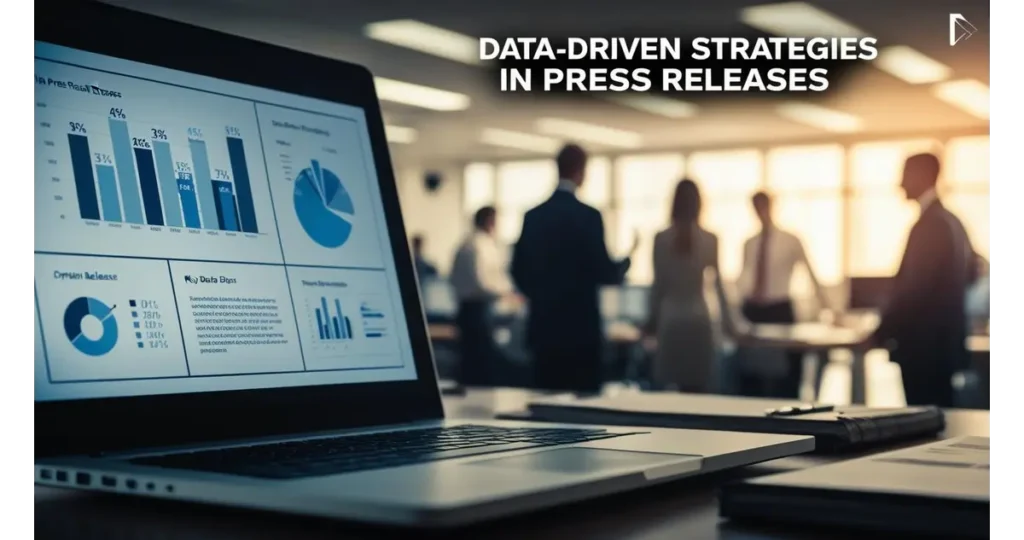
Emphasis on Data-Driven Strategies in Press Releases
The era of “spray and pray” in press release distribution is long gone. Today, data-driven strategies are at the heart of successful press release campaigns. Analytics and performance metrics provide actionable insights that help PR professionals refine their strategies, increase engagement, and demonstrate ROI to stakeholders.
The Role of Data in Press Releases
Data analytics transforms press releases from static documents into dynamic tools for brand growth. Here’s how:
- Performance Tracking: Metrics such as click-through rates (CTR), open rates, and social shares reveal how well a press release resonates with its audience.
- Audience Insights: Analytics help identify the demographics, behaviors, and preferences of your audience, allowing for better targeting.
- Content Optimization: By analyzing past performance, PR teams can refine their content to improve future results.
Key Metrics to Track
- Open Rates: Measure how many recipients opened the press release email.
- Engagement Metrics: Track clicks, downloads, and time spent on the page to understand audience interest.
- Media Coverage: Monitor how many outlets picked up your press release and the quality of the coverage.
- Social Media Impact: Measure shares, likes, and comments to gauge audience response.
Tools for Data-Driven Press Releases
- Google Analytics: Track referral traffic from your press release to your website.
- PR-Specific Platforms: Services like Cision, PR Newswire, and Meltwater offer built-in analytics dashboards to monitor distribution and performance.
- Social Listening Tools: Platforms like Brandwatch and Hootsuite track mentions and sentiment around your press release.
Benefits of Data-Driven Press Releases
- Better Targeting: Analytics reveal which segments of your audience are most receptive, allowing you to tailor future press releases more effectively.
- Continuous Improvement: Insights from performance metrics enable a feedback loop for constant refinement of messaging, timing, and content.
- Stakeholder Confidence: Demonstrating the measurable impact of press releases builds trust with stakeholders and secures buy-in for future campaigns.
Steps to Implement a Data-Driven Strategy
- Set Clear Objectives: Define what success looks like for your press release—whether it’s increased website traffic, higher engagement, or media pickups.
- Choose the Right Metrics: Focus on the metrics that align with your goals and audience.
- Analyze and Adapt: Use data insights to identify what worked and what didn’t, and adjust your strategies accordingly.
- Leverage Predictive Analytics: Some platforms offer predictive capabilities to help anticipate audience responses and optimize content before distribution.
💡 Pro Tip: Use A/B testing to experiment with different headlines, formats, or visuals. Analyze the results to determine what resonates best with your audience.
By embracing multimedia elements and data-driven strategies, PR professionals can elevate their press releases from traditional announcements to powerful tools that engage audiences, drive measurable results, and secure long-term impact. These approaches are not just trends—they are necessities for success in the competitive and ever-evolving world of public relations.
Shift Towards Sustainability Messaging in Press Releases
As consumers increasingly demand accountability and purpose-driven communication from brands, sustainability has emerged as a key focus for press releases. In 2025, this shift is more pronounced, with companies moving beyond traditional ESG (Environmental, Social, and Governance) reporting to broader, actionable sustainability storytelling. This trend reflects the growing importance of transparency and long-term impact in building trust and loyalty among stakeholders.
Why Sustainability Messaging Matters
- Consumer Expectations: Research shows that over 60% of consumers prefer to buy from brands that prioritize sustainability and social responsibility.
- Investor Interest: Investors increasingly scrutinize a company’s sustainability efforts as part of their decision-making process.
- Regulatory Pressures: Governments and regulatory bodies worldwide are implementing stricter sustainability reporting requirements, making transparency non-negotiable.
Key Themes in Sustainability Messaging
- Environmental Initiatives: Highlight efforts to reduce carbon emissions, adopt renewable energy, or minimize waste.
- Social Impact: Showcase contributions to community development, diversity and inclusion initiatives, and employee well-being.
- Sustainability Metrics: Use data to demonstrate measurable progress, such as energy savings, waste reduction, or positive societal impact.
How to Craft an Effective Sustainability Press Release
- Be Transparent: Avoid vague claims and provide concrete examples. For instance, instead of saying, “We care about the environment,” detail specific actions, such as “We reduced our carbon footprint by 30% through the adoption of solar energy.”
- Use Real Data: Back up your statements with verified statistics, third-party certifications, or testimonials to enhance credibility.
- Tell a Story: Humanize your sustainability efforts by sharing stories of individuals or communities positively impacted by your initiatives.
- Avoid Greenwashing: Ensure your messaging is authentic and aligns with actual actions. Overstated or false claims can lead to reputational damage.
Examples of Strong Sustainability Messaging
- A press release by a tech company might highlight its transition to fully renewable energy sources for its data centers, supported by data and third-party certifications.
- A fashion brand could announce a new line of sustainable clothing made from recycled materials, accompanied by details of the manufacturing process and its environmental benefits.
💡 Pro Tip: Include multimedia elements, such as infographics or videos, to visually communicate your sustainability efforts and make the message more engaging.
Personalization Techniques Beyond AI in Press Releases
While AI has revolutionized personalization in press releases, relying solely on technology can lead to generic, automated content that lacks a human touch. Personalization that incorporates research, creativity, and an understanding of your audience’s unique needs and preferences is essential for building genuine connections.
The Importance of Human-Centric Personalization
- Builds Trust: Personalized communication demonstrates that you’ve invested time in understanding your audience.
- Increases Engagement: Press releases tailored to specific journalists, media outlets, or audiences are more likely to be read, shared, and acted upon.
- Enhances Relevance: Targeted press releases are more likely to align with the recipient’s interests, increasing the chances of coverage or engagement.
Techniques for Effective Personalization
- Segment Your Audience: Divide your audience into groups based on demographics, industry, or interests. For example, a tech product press release could have one version for industry analysts and another for general consumers.
- Research Journalists: Go beyond basic media lists by researching individual journalists. Tailor your pitch to their previous coverage or stated preferences.
- Use Conversational Language: Address your audience directly and write in a tone that resonates with their values and interests.
- Reference Pain Points: Identify challenges your audience faces and highlight how your announcement provides a solution.
Examples of Personalization
- For Journalists: Instead of sending a generic release, customize it to include how your announcement aligns with their publication’s focus or previous articles.
- For Audiences: If announcing a new product, emphasize features that cater specifically to the needs of different demographics, such as “Designed for busy professionals” or “Perfect for eco-conscious shoppers.”
Your story deserves the spotlight. Explore how GlobalWavePR can help you craft impactful press releases tailored to your brand’s goals.
Balancing AI and Human Efforts
While AI can automate initial personalization, human input is essential for refining and tailoring the content. For instance:
- Use AI to segment media lists, but manually customize pitches for top-tier journalists.
- Generate a draft with AI, then add anecdotes, tone, and details that reflect the unique perspective of your brand.
💡 Pro Tip: Personalization is not about making every press release drastically different—it’s about ensuring every recipient feels the content was crafted with them in mind.
Benefits of Personalization Beyond AI
- Stronger Media Relationships: Customized pitches help establish rapport with journalists, increasing the likelihood of future collaborations.
- Higher Engagement Rates: Tailored press releases are more likely to be opened, read, and shared.
- Enhanced Brand Perception: Personalized communication reinforces your brand’s commitment to understanding and valuing its stakeholders.
By incorporating sustainability messaging and refining personalization techniques, press releases can go beyond mere announcements to become impactful tools for engagement and storytelling. These strategies not only resonate with audiences but also position brands as thoughtful, trustworthy, and forward-thinking in a competitive landscape.
Challenges and Solutions in Reaching Journalists
Reaching the right journalists and ensuring that press releases get the attention they deserve is a perennial challenge for PR professionals. With journalists’ inboxes inundated with hundreds of emails daily, crafting a press release that stands out requires strategy, creativity, and persistence. In 2025, the emphasis on precision targeting and value-driven outreach will be greater than ever.
Common Challenges in Reaching Journalists
- Overcrowded Inboxes: Journalists receive numerous press releases every day, making it difficult for your message to stand out.
- Irrelevant Content: Generic or poorly targeted press releases often fail to capture the interest of journalists whose focus areas differ.
- Shrinking Newsrooms: The reduction in newsroom staff means journalists are handling more responsibilities, leaving them less time to sort through press releases.
- Lack of Relationships: PR professionals who lack established connections with journalists may struggle to get their press releases noticed.
Effective Strategies to Overcome Challenges
- Personalize Your Outreach:
- Tailor each press release to the recipient’s interests and beat.
- Reference previous articles they’ve written to demonstrate familiarity with their work.
- Use their preferred communication channel (e.g., email, Twitter, or LinkedIn).
- Create Value-Driven Content:
- Focus on what’s newsworthy and relevant to their audience.
- Highlight unique angles or exclusive data that will make their story compelling.
- Build Relationships Proactively:
- Connect with journalists before pitching by engaging with their articles, commenting on social media, or meeting them at industry events.
- Maintain regular communication to establish trust and familiarity.
- Use Targeted Media Lists:
- Invest in media database tools like Muck Rack or Cision to identify journalists who cover your industry or topic.
- Regularly update your lists to ensure accuracy and relevance.
- Follow Up Thoughtfully:
- Send a polite follow-up email if you don’t receive a response within a few days.
- Include additional value in your follow-up, such as a new statistic, a quote, or related visuals.
Crafting Attention-Grabbing Subject Lines
The subject line is your first impression and can make or break your chances of a journalist opening your email. Best practices include:
- Keeping it concise (under 10 words).
- Highlighting the newsworthy element, such as “New Study: 80% of Consumers Prefer Sustainable Products.”
- Using action-oriented language, like “Exclusive Insights” or “Breaking News.”
💡 Pro Tip: Time your press release distribution strategically. Research suggests that emails sent mid-morning on Tuesdays or Wednesdays are more likely to be opened.
Benefits of Strategic Outreach
- Increased likelihood of media coverage.
- Stronger relationships with journalists, fostering long-term collaboration.
- Higher engagement rates for press releases.
Long-Term Impact of Press Releases
While press releases are often thought of as short-term tools to announce news or updates, their impact can extend far beyond their initial distribution. By optimizing press releases for longevity, PR professionals can maximize their value and create lasting impressions on audiences and stakeholders.
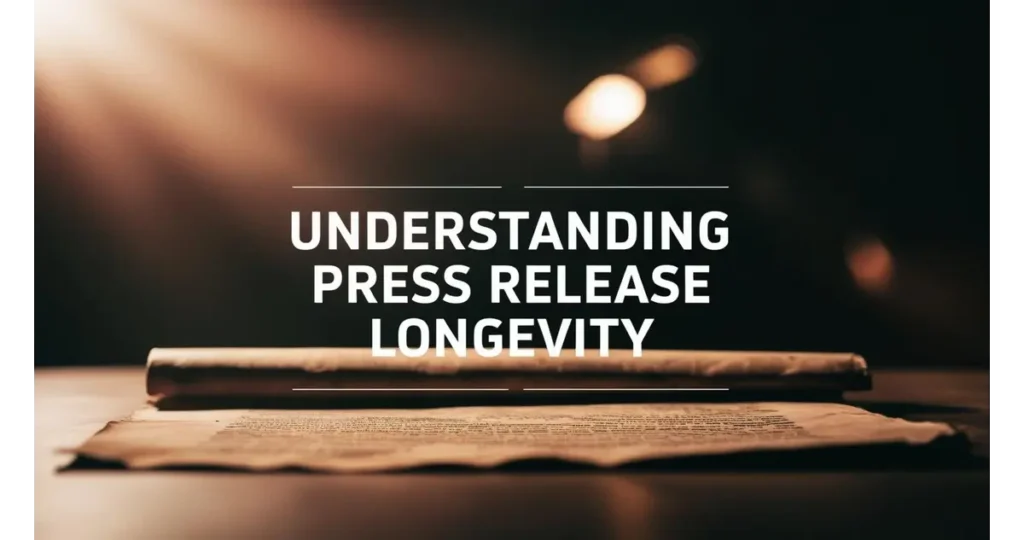
Understanding Press Release Longevity
Press releases remain accessible online indefinitely, especially when distributed through reputable platforms like PR Newswire or hosted on company websites. This creates opportunities for:
- SEO Benefits: Optimized press releases can rank for relevant keywords, driving ongoing organic traffic to your website.
- Evergreen Content: Certain press releases, such as those announcing industry insights or product guides, remain relevant and useful long after publication.
- Brand Authority: Well-crafted press releases enhance your brand’s credibility and thought leadership over time.
Strategies to Maximize Long-Term Value
- Optimize for SEO:
- Include target keywords in the headline, subheadings, and body text.
- Use descriptive alt text for any multimedia elements.
- Add internal and external links to enhance visibility and credibility.
- Repurpose Content:
- Convert press release highlights into blog posts, social media updates, or infographics.
- Incorporate key insights into newsletters or email campaigns.
- Leverage Multimedia:
- Videos and infographics included in press releases can be shared across other channels, extending their reach and utility.
- Host multimedia elements on your website or YouTube channel for ongoing engagement.
- Use Press Releases as References:
- Refer back to past press releases when creating future campaigns or reports to build a cohesive narrative.
- Highlight milestones achieved since the release to reinforce brand growth.
Benefits of a Long-Term Approach
- Sustained Traffic: SEO-optimized press releases can drive visitors to your site long after the initial release.
- Enhanced Credibility: A portfolio of thoughtful, well-written press releases strengthens your brand’s authority in your industry.
- Improved ROI: Maximizing the lifespan of each press release ensures greater returns on your PR investment.
💡 Pro Tip: Regularly review and update older press releases to keep them relevant, especially if they rank well for keywords or are linked in external articles.
By addressing challenges in reaching journalists and focusing on the long-term impact of press releases, PR professionals can significantly enhance their campaigns. These approaches not only improve immediate outcomes but also build a foundation for sustained success in the ever-evolving world of public relations.
Why Choose GlobalWavePR as Your Press Release Distribution Partner?
At GlobalWavePR, we’re committed to helping startups like yours succeed with expertly crafted press releases and strategic distribution that delivers tangible results. Whether your goal is to secure funding, boost investor confidence, or generate excitement for a product launch, we have the expertise and resources to make it happen.
Here’s why GlobalWavePR is the ideal partner for your press release needs:
- Expertly Written Content
- Our press releases are crafted to engage and resonate with key audiences, including investors, media professionals, and potential customers.
- Extensive Distribution Network
- Reach your target audience effectively through our vast network of journalists, newswire services, and digital platforms.
- SEO-Optimized Releases
- We ensure your press releases are optimized for search engines, helping your story rank higher and increasing your online visibility.
- Startup-Centric Approach
- Understanding the unique challenges of startups, we design strategies tailored to help you stand out in a competitive landscape.
Ready to Share Your Startup’s Story?
Visit GlobalWavePR today and discover how our press release services can help propel your startup to new heights. Let’s make your next press release a milestone in your success journey!
FAQ Section: Addressing Common Questions About Press Releases
As the PR industry evolves, so do the questions surrounding best practices, strategies, and trends for press releases. Below, we address some of the most common queries to help PR professionals optimize their press release strategies.
Q: What is the best way to make my press release stand out?
A: Focus on creating a compelling headline, include engaging multimedia elements, and tailor your press release to the audience or journalist you’re targeting. Personalization and relevance are key.
Q: How often should a company release press releases?
A: The frequency depends on your organization’s news cycle and communication goals. It’s better to prioritize quality over quantity—publish press releases when you have newsworthy, valuable information to share.
Q: How can I measure the success of a press release?
A: Use analytics tools to track metrics such as open rates, click-through rates, media pickups, social shares, and referral traffic to your website. These insights can help you refine your future strategies.
Q: What role does AI play in press release creation?
A: AI can assist in content creation, personalization, and distribution. It enables PR teams to generate drafts quickly, tailor messaging for specific audiences, and analyze performance data in real-time.
Q: What are some common mistakes to avoid when writing press releases?
A: Avoid jargon, overly promotional language, and lengthy paragraphs. Ensure your press release is concise, clear, and tailored to the audience’s needs. Always proofread for grammar and factual accuracy.
Q: How important is multimedia in press releases?
A: Multimedia is critical for engaging readers and increasing shareability. Visuals like images, videos, and infographics enhance comprehension and make your press release more appealing to journalists and readers alike.
Q: What should I include in a sustainability-focused press release?
A: Highlight specific initiatives, measurable outcomes, and data-backed claims. Avoid vague or exaggerated statements to ensure authenticity and credibility.
Conclusion
The press release landscape in 2025 is more dynamic and innovative than ever. By embracing AI, multimedia integration, data-driven strategies, sustainability messaging, and personalized outreach, PR professionals can create press releases that not only capture attention but also drive meaningful engagement and long-term impact.
Remember, press releases are not just about announcing news—they’re about telling a story, building relationships, and reinforcing your brand’s authority. By adopting these cutting-edge trends and best practices, you can position your brand as a thought leader and ensure your messages resonate with audiences worldwide.
Ready to transform your press release strategy? Partner with GlobalWavePR for expert press release services that deliver measurable results and elevate your brand. Contact us today!





